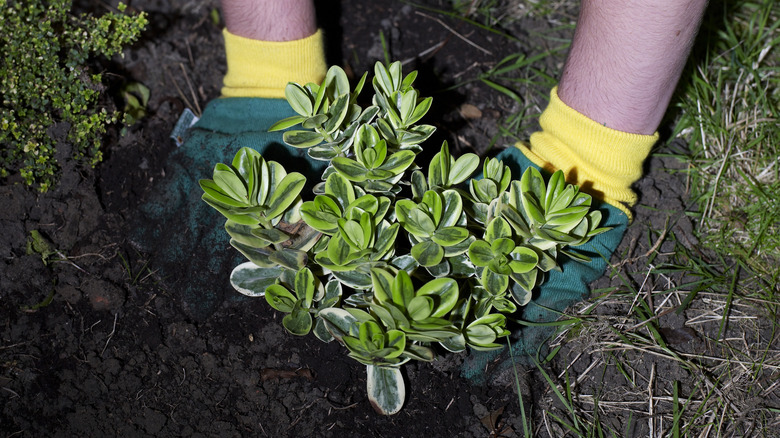Garden Trees, Shrubs & Vines
Kyle Schurman
If you have an instinct to wait to plant new shrubs and bushes around your home until the spring, you’re not alone. Warmer temperatures and seeing everything green up after a long winter season give people the desire to start planting and to improve the landscaping design heading into the growing season. However, there are plenty of reasons to think about planting your new shrubs and bushes in the autumn instead. Importantly, you can give these plants a better chance to strengthen their root systems by putting them in during the autumn before the ground has a hard freeze.
The soil temperatures in autumn are still plenty warm from what occurred during the summer, which gives the roots of the bushes and shrubs the boost they need to establish themselves under the ground. In the springtime, the deeper soil may still be pretty cold from the winter, creating quite a shock for the roots of your bushes that doesn’t help them grow as well.
It’s also important to consider the cost of acquiring new shrubs and bushes. Generally, shrubs are going to be available at a discount in the autumn, as nurseries try to sell them rather than having to discard them or store them in a greenhouse. If you need to put in quite a few new shrubs, such as if you are revamping the landscaping or just have a lot of holes to fill, being able to purchase the bushes at a discount is a significant benefit.
Shrubs and bushes can thrive in cooler autumn weather

Michaeljung/Getty Images
By planting shrubs and bushes in the fall, you can take advantage of cooler air temperatures, which helps give the plants time to establish themselves. They aren’t stressed by the heat of summer right away after you put them in. Typically, when the air temperatures are cooler than temperatures under the ground, it encourages root growth in plants, strengthening the bushes and shrubs.
Autumn often has more consistent rain than what happens in the summer, and the cooling soil can hold onto its moisture better than the evaporation that occurs faster in hot summer weather. This means you don’t have to water the new bushes as often as you might if you plant in the late spring or summer. You also have fewer insects to worry about in the fall, leaving the shrubs and bushes free from these external damages that could affect their health.
Multiple other benefits exist, too, such as having a better feel for what areas of your landscaping and garden need a boost from new shrubs. You are coming directly off the growing season, so it’s easy to remember which areas had bare spots or struggling plants where new growth will be a welcome addition. Additionally, you can spend the time necessary to care for the bushes in the fall versus trying to care for them during the spring when dozens of items need your attention in the yard and garden.
How to plant your bushes and shrubs in fall for maximum success

Minna Kantonen/Getty Images
To give your new bushes and shrubs the best chance of successfully growing in the fall, it’s important to follow a few steps during planting. Start by digging a hole that’s deep enough to completely cover the root ball. You should provide at least six inches of clearance around the root ball, ensuring roots can expand adequately in the cooling autumn soil.
Remember, root growth of bushes and shrubs is a significant advantage of planting in the fall, so the hole you dig needs to provide the necessary space. As you begin filling soil back into the hole, you may want to add peat moss or compost if the native soil is especially sandy or has a lot of clay, giving the roots the perfect space for expanding and strengthening.
Add water to the hole after you’ve backfilled it about halfway. Then, add the remainder of the soil mixture before tamping it down and adding more water. You should place a berm of soil a couple of inches high around the base of the shrub or bush to allow it to hold water more efficiently.
You also may want to add a few inches of mulch around the bush or shrub to further help with moisture retention. Continue to water the new plant regularly until the time of the first freeze. When you receive autumn rain, though, you can cut back on adding your own water.




